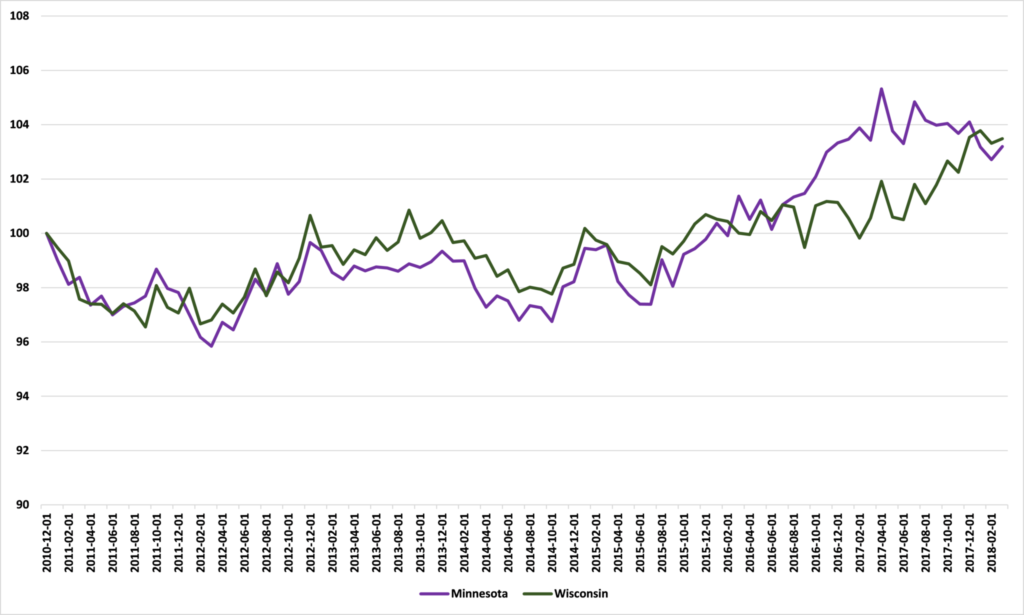Since Governors Dayton and Walker took office, average hourly earnings growth has been higher in Wisconsin than in Minnesota
I’ve been writing recently about a new report from the Economic Policy Institute which claims to show that Minnesota’s economy has performed much better since Mark Dayton became governor in January 2011 than Wisconsin’s has since Scott Walker did at the same time time. If you’ve been reading, you’ll know that some of the report’s data selections and conclusions are rather strange, but do seem to have the result of supporting policies the EPI favors.
In truth, whether it’s GDP growth (Wisconsin’s has grown faster), unemployment rates (Wisconsin’s has fallen faster and further), or labor force participation (Wisconsin’s has risen further and faster), it simply false to claim, as the EPI does, that “by virtually every available measure, Minnesota’s recovery has outperformed Wisconsin’s.”
What do we see if we keep looking at the EPI’s report?
Since December 2010, wages have risen by more in Wisconsin than Minnesota
Working through in order, we come to wages next. The EPI reports that
“After Walker and Dayton assumed office…wages in Minnesota have taken off, while in Wisconsin, they have stagnated…From 2010 to 2017, the median wage in Minnesota cumulatively rose 2.4 percent over and above inflation—meaning that middle-wage workers in Minnesota have had a measurable improvement in their living standards…In contrast, from 2010 to 2017, the median wage in Wisconsin rose only 0.3 percent after inflation. In other words, middle-wage workers in Wisconsin are treading water, barely hanging on to the same buying power they had in 2010.”
The data tells a rather different story. Monthly data from the Bureau of Labor Statistics show that in December 2010, the month before the two governors took office, the average hourly earnings of private sector employees in Minnesota was $27.92 (in April 2017 dollars) and $24.93 in Wisconsin. But, as Figure 1 shows, by March 2018 this was up by 3.2% in Minnesota, to $28.81, but by 3.5% in Wisconsin, to $25.80.
Figure 1 – Change in private sector average hourly earnings, Minnesota and Wisconsin, December 2010=100

Source: Bureau of Labor Statistics and the Center of the American Experiment
There isn’t much in it in terms of growth rates and Wisconsin’s average hourly earnings are still below Minnesota’s, but they were when Governors Walker and Dayton took over. What is clear, however, is that it is ludicrous to claim, as the EPI does, that “Undoubtedly, Wisconsin’s determined efforts to weaken unions have contributed to the state’s poor wage growth.” To what, you may ask, do they attribute Minnesota’s poorer performance?
John Phelan is an economist at the Center of the American Experiment.